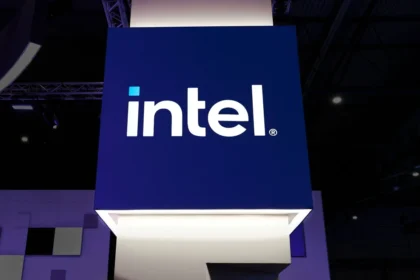In enterprise infrastructure, choosing an OS is a serious decision. It is a bet on stability, security, and future-proofing. It affects everything from how well automation runs to how stable your systems are during heavy use. I have managed systems in finance, digital identity, and ride-hailing platforms, where even minutes of downtime can ripple into business disruptions.
When CentOS changed direction, we needed a system we could trust under pressure, something that did not break our automation nor fail compliance checks. After thorough testing and multiple deployments, AlmaLinux delivered exactly what we needed.
When you are responsible for uptime, speed, and compliance, you need an OS that will not let you down. AlmaLinux has proven itself in these ways.
1. Stability and Predictability
The combination of system downtime and software bugs and version conflicts creates both employee stress and financial losses. The stability and reliability of AlmaLinux make it one of the most dependable operating systems I have encountered. It has been consistently reliable in our operations, performing like a well-trained engineer, steady and composed under pressure.
The stability of AlmaLinux is due to its identical functionality to Red Hat Enterprise Linux (RHEL). This means updates and deployments stay consistent and reliable. No sudden changes in systemd units, kernel tuning, or SELinux contexts. It has the kind of predictability that lets automation thrive. You can patch with confidence, knowing that nothing weird will break.
In production, I have seen AlmaLinux hold its ground during kernel-heavy operations and large file transfers better than some distros.
2. A Community-Driven RHEL Alternative
When Red Hat shifted CentOS to a rolling release model (CentOS Stream), many enterprise users were left stranded. AlmaLinux filled that vacuum as a stable, community-driven mirror of RHEL. This was a coordinated response by experienced engineers and organizations that depend on enterprise-grade Linux.
Our infrastructure transition from CentOS to AlmaLinux occurred without any issues. The kernel configurations and system packages functioned without any problems. The source tree synchronization with RHEL ensures AlmaLinux maintains enterprise readiness while eliminating licensing expenses.
3. Security and Compliance Made Simple
AlmaLinux makes compliance manageable. It supports Security-Enhanced Linux (SELinux) in enforcing mode by default, and provides timely security patches aligned with upstream RHEL.
Many of the systems I manage are in regulated environments; financial services, digital identity systems, even public sector applications. AlmaLinux’s SCAP (Security Content Automation Protocol) compatibility allows for straightforward security baselining and compliance reporting. This has drastically reduced audit preparation time.
AlmaLinux makes it easy to keep our systems secure and compliant. It works well with tools like OpenSCAP and supports FIPS. Even with automatic updates using dnf-automatic, we stay on track in both staging and production.
Related: 10 Innovators Redefining Modern Industries Through Revolutionary Ideas
4. Performance Under Pressure
AlmaLinux stays stable even under pressure. In use cases with heavy web services and container tools like Docker and Kubernetes, it has delivered fast I/O and low CPU latency.
We tested AlmaLinux in high-traffic situations, like API gateways handling thousands of requests per second. It performed well, with low system overhead and smart use of multi-core servers.
With AlmaLinux, things like kernel tuning, IRQ balancing, and cgroups work as expected. This really helps when running tools like Redis, PostgreSQL, or NGINX under heavy load.
5. The Power of Compatibility
In our CI/CD pipeline, AlmaLinux lets developers build and test with the same setup used in production. This helps avoid the common “works on my machine” issue.
AlmaLinux also runs well on big cloud platforms like AWS, Azure, and Google Cloud. I have used the same image for both on-premise and cloud, and it worked the same everywhere.
6. Built-in support with no recurring fees
Enterprise licenses can add up quickly. AlmaLinux eliminates that burden while still offering support options when needed.
You are not on your own either. While paid support is available, the AlmaLinux community often gives all the help you need. Many common issues like kernel bugs or systemd errors have already been solved in community threads, so it’s easy to find answers.
7. Easy Automation and Integration
The automation capabilities of AlmaLinux represent one of its most valuable features. Our team heavily relies on Ansible automation because dnf and firewalld and systemd operate seamlessly without requiring additional configuration.
The consistent setup of AlmaLinux enables our scripts to become more reliable when we use Terraform and Packer. The Jenkins and GitLab runners operate without any modifications.
The process of provisioning new servers remains straightforward. We implement AlmaLinux in golden images before running them through CI testing for complete verification. The deployment process becomes significantly faster because of this approach which saves us multiple hours each time we deploy.
8. Scalable, Reliable, Ready
AlmaLinux handles different types of deployments well, from single servers to microservices in Kubernetes. We use it on both bare metal and cloud, with little need to change anything.
In our Kubernetes clusters, AlmaLinux nodes are stable and easy to lock down. The default settings for firewalld and SELinux work well for secure containers.
Final Thoughts
Organizations running mission-critical systems that need high availability and strict compliance standards should evaluate AlmaLinux as a serious option.
The OS goes beyond being a CentOS replacement because it presents a carefully designed solution that meets modern enterprise requirements effectively.
ABOUT THE AUTHOR
Yusuf Kolawole is a Senior Software Engineer who focuses on backend systems, automation, and reliable infrastructure. He builds robust, scalable platforms that support key business operations. Yusuf has led engineering projects in finance, digital identity, and mobility. He collaborates closely with teams to accelerate development, reduce downtime, and improve user experiences. His work reflects a strong commitment to building systems and platforms that are solid, dependable, and prepared for future growth.







